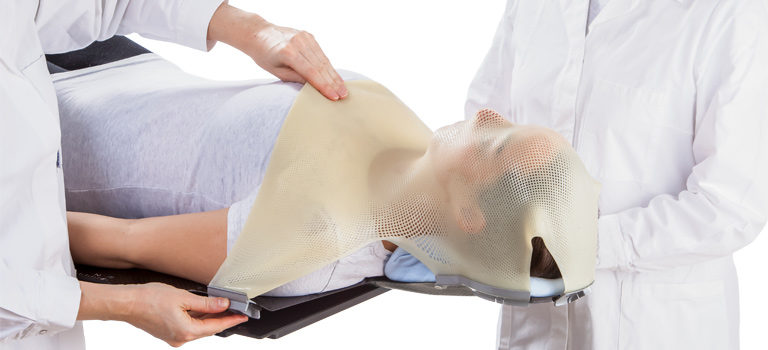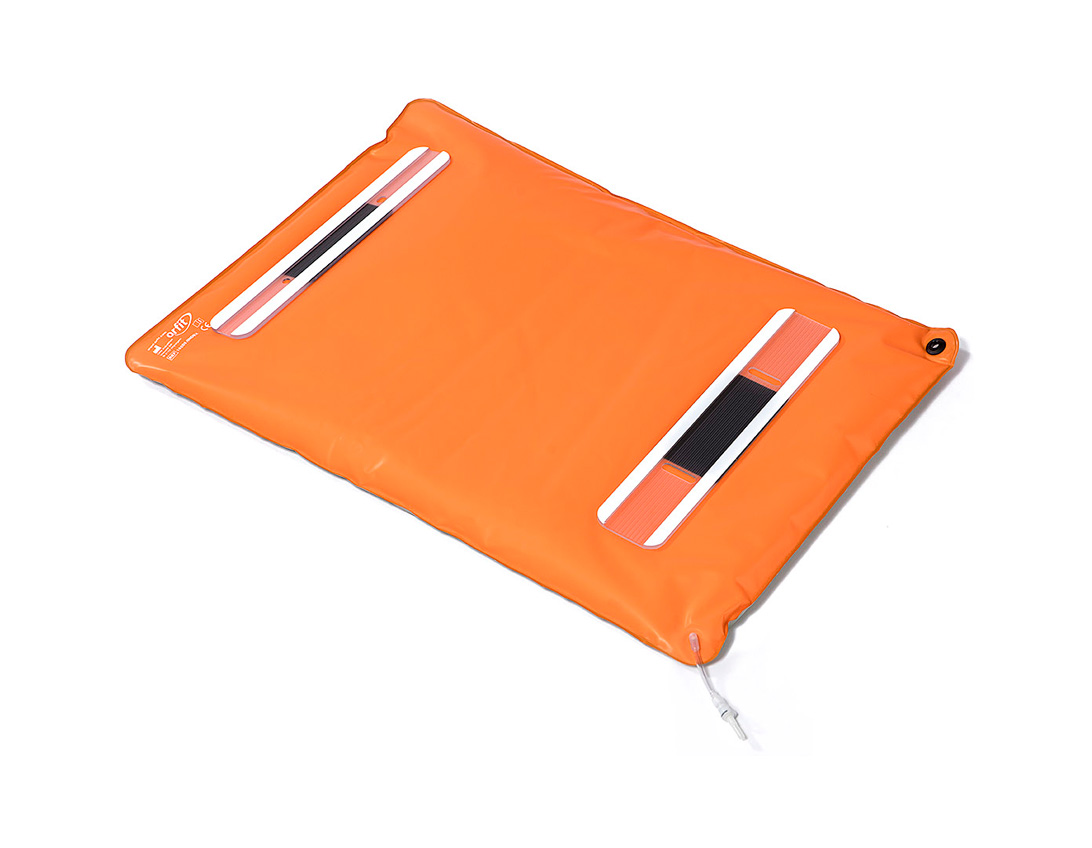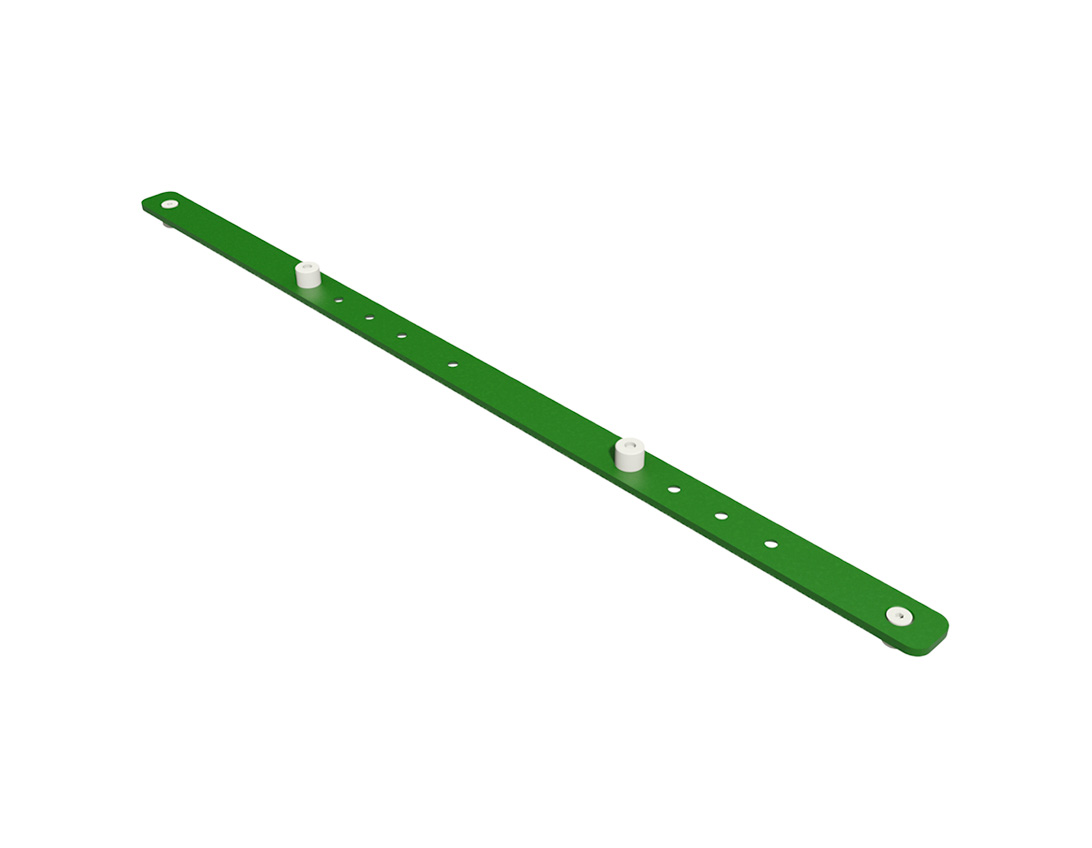
How to use Orfit Vacuum Bags
Positioning and indexing vacuum bags for optimal immobilization
Vacuum bags are an excellent tool for precise and comfortable patient immobilization. Thanks to the carefully chosen materials, Orfit vacuum bags conform closely to the patient’s anatomy and offer a reliable, precise and reproducible immobilization.
It is of vital importance that vacuum bags are positioned and indexed correctly to ensure optimal reproducibility. When indexed properly, the bags will remain in the right position throughout the duration of the treatment.
This article discusses several positioning do’s and don’ts and covers all indexing options to get perfect use out of Orfit Vacuum Bags.
Positioning the vacuum bag
Make sure that you position the vacuum bag correctly on the treatment couch to avoid damage to the fabric. Each Orfit vacuum bag is made of two types of fabric: an orange and a gray one. The orange fabric, which is non-slip, helps to limit movement of the bag on the couch top. It should always be facing downwards, resting on the couch top.

The orange (non-slip) fabric should be facing down, the gray fabric facing up.
Never use a cloth or other material between the treatment couch and the vacuum bag. The cloth could cause the vacuum bag to slip and could affect the reproducibility of the overall immobilization set-up.
Indexing a vacuum bag
Vacuum bags should be properly secured to the treatment table to prevent them from moving. There are four different options to index the vacuum bag in a reproducible position:
- Indexed vacuum bags (/INDEX) can be indexed directly on the couch top with the use of 2-pin bars. The bags have been fitted with two plastic indexing laths at the bottom that fit on a 2-pin bar.
- Non-indexed vacuum bags should be indexed on the couch top by means of 2-pin bars and indexing bars (18059). You need two indexing bars to ensure that the vacuum bag remains in the correct position.
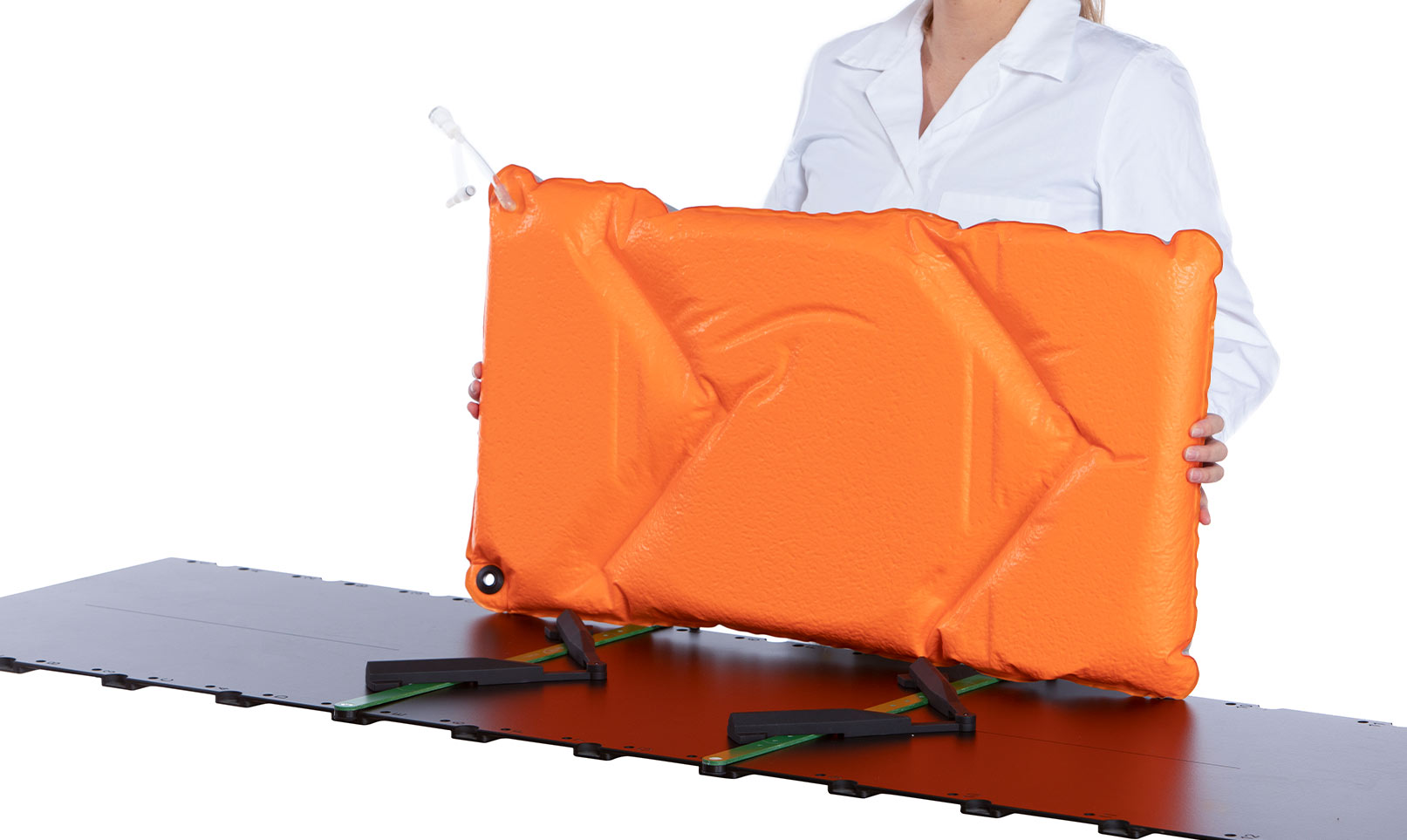
Use a combination of 2-pin bars and two indexing bars to secure non-indexed vacuum bags to the couch top.
- Non-indexed vacuum bags can also be indexed on top of a base plate. All long Orfit base plates (AIO, HP PRO, SBRT base plates…) have holes that accept the indexing bar (18059). Be sure to use two indexing bars to prevent the vacuum bag from moving.
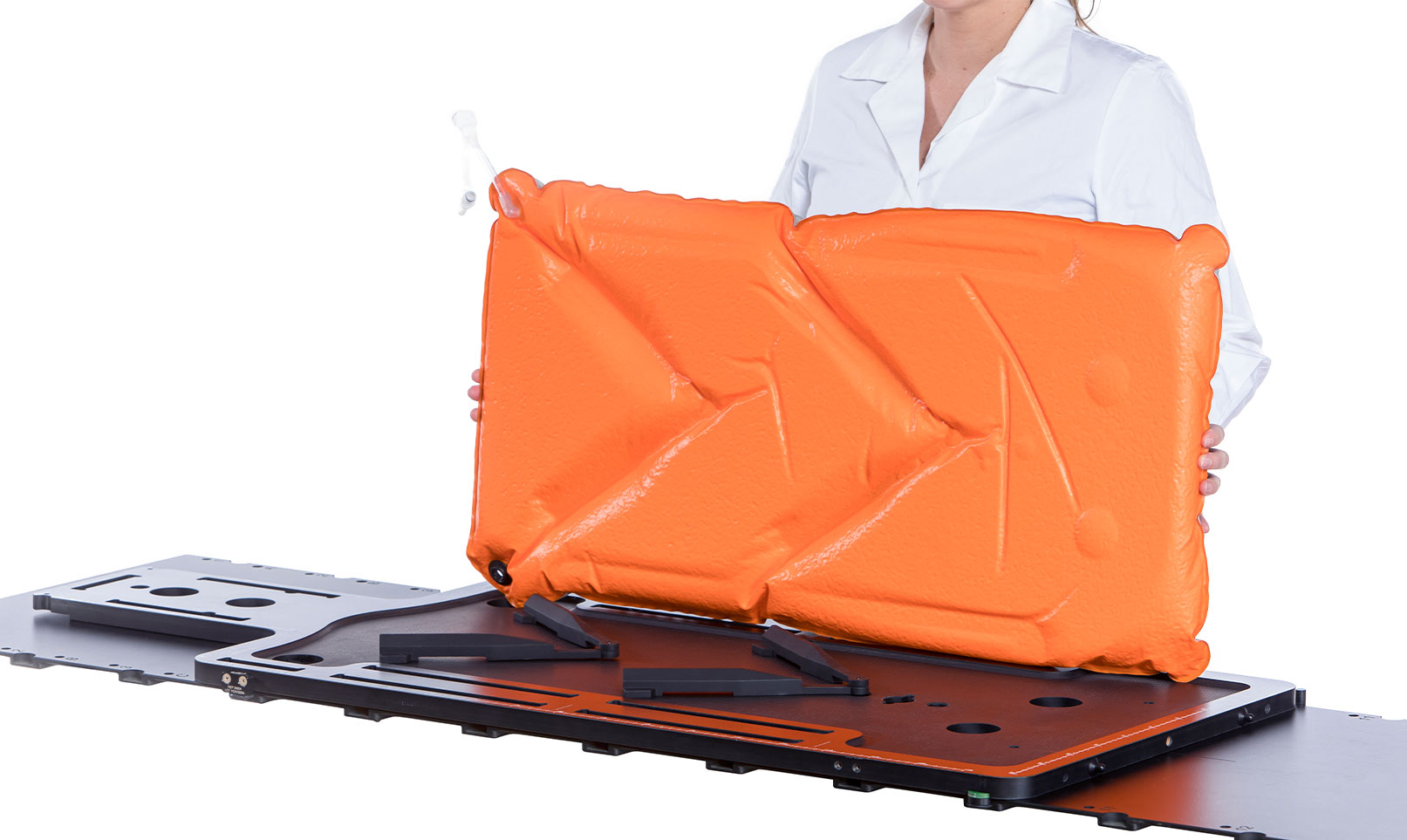
Use two indexing bars to position a non-indexed vacuum bag to a base plate.
- The small head support vacuum bag (18208) is indexed into an Orfit head support. It takes on the contours of the 3D-shaped supports and as such can be repositioned easily on a daily basis.
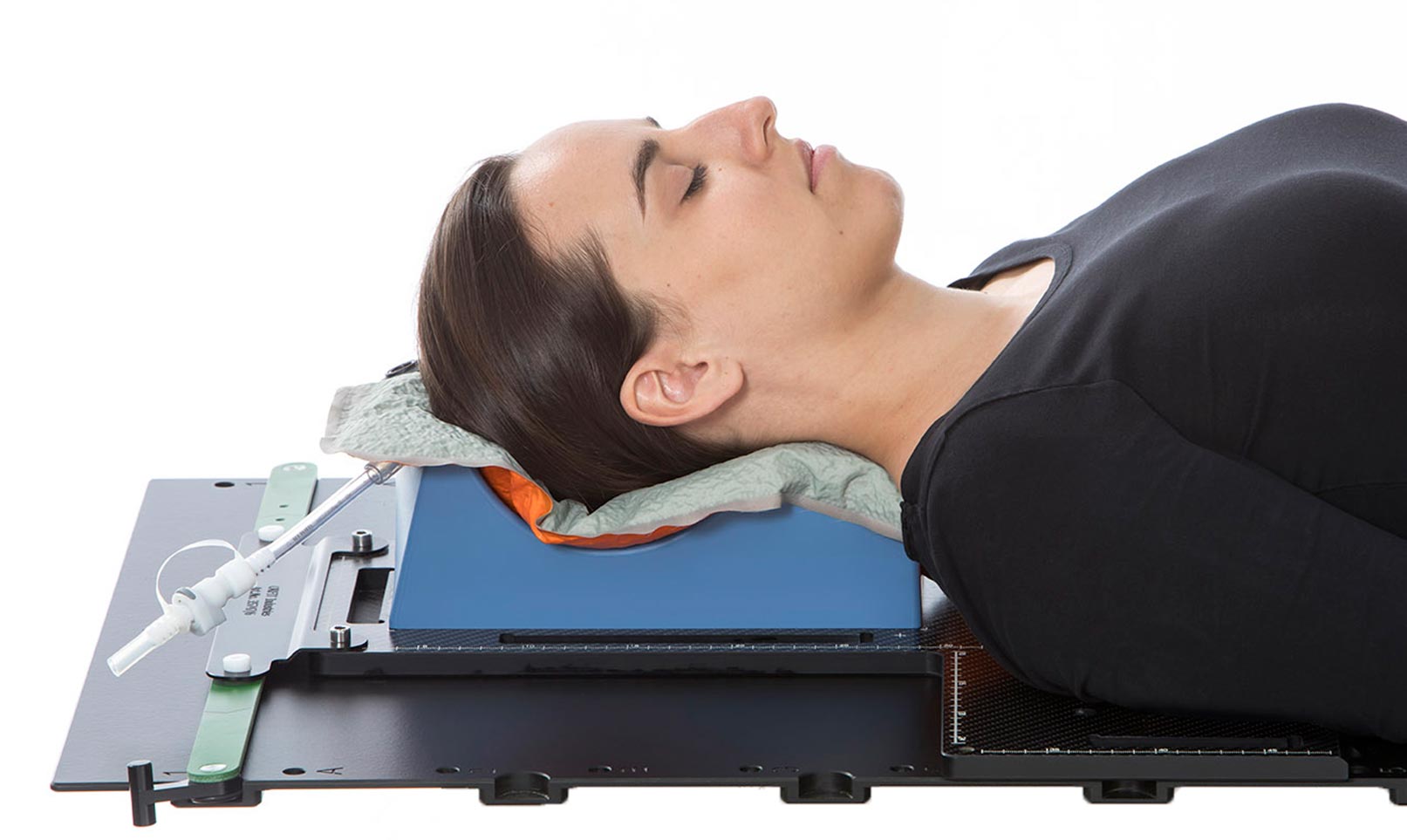
Small individual vacuum bags are indexed into an Orfit head support.
Maintaining the vacuum
As long as the air was evacuated correctly, vacuum bags keep their shape for a minimum of 6 weeks. If the vacuum bags need to be stored for a period longer than 6 weeks, check the status of the vacuum regularly.
Vacuum bag evacuation times:
- Small individual head support vacuum bags (18208) take at least 1.5 minutes to reach the ideal shape.
- All other vacuum bags should be kept under vacuum for at least 3 minutes.
We advise using an Orfit vacuum pump to evacuate the air. Use the high capacity vacuum pump when the bag’s filling is over 30 litres.
Read the Instructions for Use for detailed information on the correct use and evacuation of Orfit Vacuum Bags.
In addition to using the correct positioning and indexing technique, proper care is key to making the most of a vacuum bag. Discover our essential Care & Maintenance Tips for Orfit vacuum bags.
![]()
Contact us for more product information or find your local distributor here.
![]()
If you’d like to receive the latest product updates and interesting Orfit news, subscribe to our newsletter:

